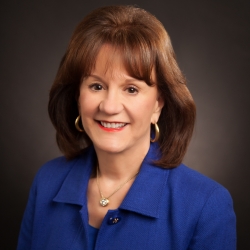Charter schools – offering up a brand new marketplace in the U.S.
A new U.S. marketplace is growing so fast many have not noticed it – the charter school network. It is already extremely large and it touches almost every region of this country. Contractors of all types and sizes should take notice of the abundance of upcoming opportunities. And, the public at large should also be aware of what is happening.
In 2016, about 130,000 students were on waitlists hoping to be accepted to a charter school in Texas. Nationwide, as far back as the 2013-14 school year, more than one million students’ names were on waitlists for charter schools. That number has now doubled or tripled.
In spite of outcries from thousands of public school leaders, elected officials, parent-teacher organizations and education experts who claim that charter schools are going to destroy the country’s public school system, demand from students to enroll in these alternative-choice schools continues to escalate. This trend is definitely worthy of note.
Although many people think of charter schools as being separate from the public school network, the schools are actually funded and regulated in many ways by state public school systems. Charter schools receive public funding based on enrollment. The average daily attendance data controls funding.
Charter schools are eligible for state and federal funding as well as government grants, and they are regulated in many ways similar to public schools. The schools receive about 30 percent less per student but are allowed to offer unique types of basic curriculum which appeals to students and parents.
 There are more than 7,000 charter schools in the U.S. Between 2001 and 2016, the percentage of all public schools that were charter schools increased from 2 to 7 percent and enrollment increased from 400,000 to 2.8 million students. No current enrollment data is available but revenue to charter schools nationwide was approximately $41 billion in 2018.
There are more than 7,000 charter schools in the U.S. Between 2001 and 2016, the percentage of all public schools that were charter schools increased from 2 to 7 percent and enrollment increased from 400,000 to 2.8 million students. No current enrollment data is available but revenue to charter schools nationwide was approximately $41 billion in 2018.
Only 27 percent of the existing charter schools have their own buildings. As they expand and move into campuses, construction will be rampant over at least the next decade. Not only will there be huge opportunities for construction firms, but also for technology, security systems, software, hardware, data analysis, equipment of all types, desks, kitchen facilities, sports areas and office equipment.
In Colorado, legislation is moving through the state legislature to increase funding for charter school facilities. The governor is supporting a bill to provide $2.6 million for construction projects at charter schools. The speaker of the Florida House is working to ensure that revenues from recently approved property tax increases in Miami-Dade County are shared with area charter schools. Many school districts will use public funding to leverage additional private-sector capital investment for projects.
While individual states may adopt their own rules, there are clear federal procurement standards for charter schools. Those standards require purchases to comply with schools’ documented procedures and there must be open competition among vendors. There are conflict-of-interest policies in place as well.
In Boston, the Neighborhood House Charter School filed plans to expand its existing facilities. The school, one of the oldest charter schools in Massachusetts, wants to add 12 classrooms and a gym in a three-story extension. The school has a total of 650 students and plans to increase enrollment to 828. Officials hope construction can begin by March of next year.
In upstate New York, two new charter schools were proposed in the Syracuse City School District. Emerald Charter School and CNY Institute of Academics & Performance could become the fifth and sixth charter schools in the district. Emerald plans to enroll 320 students and CNY plans to enroll 200 students. District funds allotted to existing charter schools are $26.1 million annually.
The University of Wisconsin’s Office of Educational Opportunity recently approved expansion of One City Schools in Madison. That charter school previously served only kindergarten age students but will now also serve elementary students. It will expand through sixth grade in 2022-23. The school plans to add 12 classrooms, two multipurpose rooms, a gym, conference space, art/music room and other space in a 10,000-square-foot facility.
Four charter school operators have applied to the Texas Education Agency for new charter schools in the San Antonio area. The schools will add thousands in the next five years. Flex High School will enroll roughly 600 students in the south/central area of San Antonio. Prelude Preparatory will open a kindergarten through eighth grade campus beginning with 144 kindergarteners and first graders before growing to more than 600 students in five years. The Judson Independent School District Preparatory in San Antonio will begin with 170 students and grow to more than 1,300 as it expands from fifth through twelfth grade. Lastly, the Gathering Place will house grades K-8 from four different school districts in San Antonio and start with 378 students before growing to 1,458. If approved, this charter network plans to open in the 2020-21 school year.
Changes are occurring almost too rapidly for interested parties to watch, but monitoring this trend is advised. The needs are diverse, immediate and universal.
SPI’s team of experienced procurement consultants have a long track record of identifying and winning public sector business. Contact them today!

 512-531-3900
512-531-3900 Request More Info
Request More Info
